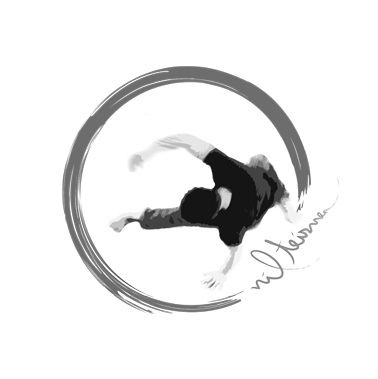Use it or Lose it (?)
Much said, often heard – but what is actually behind “Use It Or Lose It”?
In this short article I want to explain exactly that.
Your body – a master of adaptation (Use It ..)
Adaptation (from Latin ‘adaptare’, to adapt, to change) is, simply put, the ability to adapt to certain conditions. Every living being – including humans – possesses this ability. Whether you realise it or not, your body adapts umpteen times a day to changing environmental conditions. Examples: The adaptation of your blood sugar and the associated insulin production due to a meal, the adaptation of your muscles due to training stimuli, the adaptation of your pupil due to different light effects or the adaptations of your nerve cells due to repeated execution of a movement (more on this in my following article on movement learning!). These adaptations can be very quick (pupillary reflex) or take a long time (those coveted biceps don’t come overnight…).
How can training or exercise affect your body?
An adaptation would be, for example, as mentioned above, the increase in thickness of your muscles due to training stimuli (in short: high loads lead to micro tears in the muscle fibres, which are “filled” by new building blocks (proteins)), strengthening of your bones due to forces acting on them (in short: muscle tension can lead, among other things, to the structure of your bones changing on a micro level. This happens through a change in the alignment of the bone trabeculae [see Wolff’s law or piezoelectric effect]), improvement of capillarisation (expansion or new construction of the smallest blood vessels) due to endurance training (in short: capillaries, the smallest blood vessels, are expanded or newly formed in order, among other things, to be able to transport metabolic products away from the muscles) or the improvement of your mobility (see Articles).
To return to the proverb: If you regularly create circumstances, like exercising a muscle, your body adapts to it. In other words: Use xyz and xyz will stay with you – Use It.
Your Body – A Saving Fox (.. Or Lose It)
The reality is that adaptation can go both ways: Bone density/muscle thickness/number and size of capillaries can increase, but just as well it can decrease. You often notice this after a longer break from sport/exercise/movement: you have become weaker, you have become stiffer and you have to exert yourself more during physical activity than before. But why does the body break down what it took so much effort to build up before? The main reason is that your body can use the energy it actually needs to maintain your muscles, for example, for more “important” things. The body always strives for an optimal energy balance in order to be able to produce as much energy as possible from as little food as possible: In times of food scarcity, it was necessary for survival to have the most efficient energy balance possible). Bone density decreases because the tensile and compressive forces on the bones are reduced and mobility deteriorates due to “matted” connective tissue structures (so-called fasciae). Generally speaking, the body sheds unnecessary ballast. In other words: Don’t use xyz, and you lose xyz – Or Lose It.
Here, however, I would like to take some harshness out of the saying “Use It Or Lose It”. Lose It sounds so final. In very few cases, however, this is the case. Often the lost ability can be reactivated through training/use. Depending on the length of the training break, this can take shorter or longer.
The body has even developed mechanisms to help it regain its old abilities more quickly after a break. One of these mechanisms is the so-called muscle memory effect. This means that after a break in training, the original muscle mass and strength is back at the old level more quickly than the time it took to build up the muscles before the break. The reason for this is that the muscle cells have lost volume, but have not been “dissolved” (the cell nucleus remains intact, and thus also the “intelligence of the cell”) and can therefore be reactivated. In addition, the movement patterns (e.g. performing a squat) still exist and no longer have to be learned.
Practical application
I hope that I have been able to show you what the basics behind the saying are. If you now think about it, many “Why?” questions suddenly fall away. Why am I so immobile? Why do I have no strength? Why do I have underdeveloped core muscles and back pain? The answer to these questions: Probably because you are not using your body/skills! How often do you move your joints to the end of their range of motion (and thus into a stretching position)? How often do you use force? Often the answer is: could be more.
Finally, a few practical tips that you can think about more often:
Depending on your goal, spend more time fulfilling them:
Flexibility: Challenge your flexibility in many situations (hanging out on branches/poles on the bus/door frame, stretching calf muscles on stairs/stones, sitting in a squat while reading, or, or, or…).
Strength: Do activities every day that train your strength (carry heavy shopping bags in one hand – perhaps even overhead, take two, three, four or five stairs at a time, consciously tense your trunk muscles more often – while sitting, walking, lying down, etc.).
Compensate for imbalances: You notice that when you stand, you strain one leg more than the other? You notice that you generally only turn to one side? You usually only use your right hand in everyday life? Pay a little attention to yourself and your body and you will notice such “little things”. Next time try to use your “weak” side.
…
I hope you enjoyed this very general article. If you have any further questions, just contact me (info@nilteisner.de).
Stay loose and keep moving,
Nil



